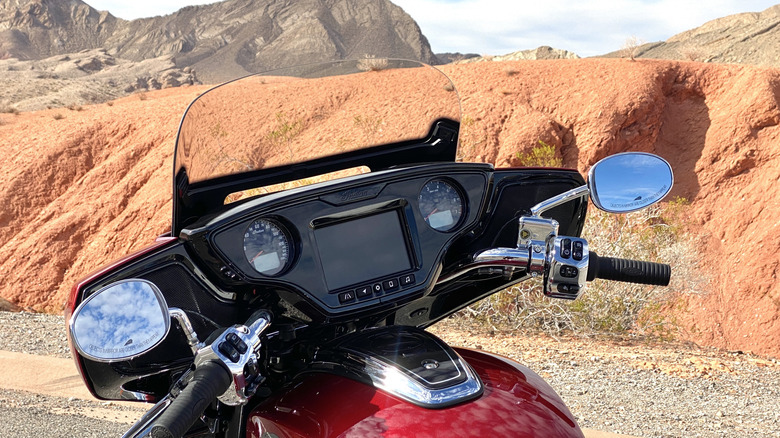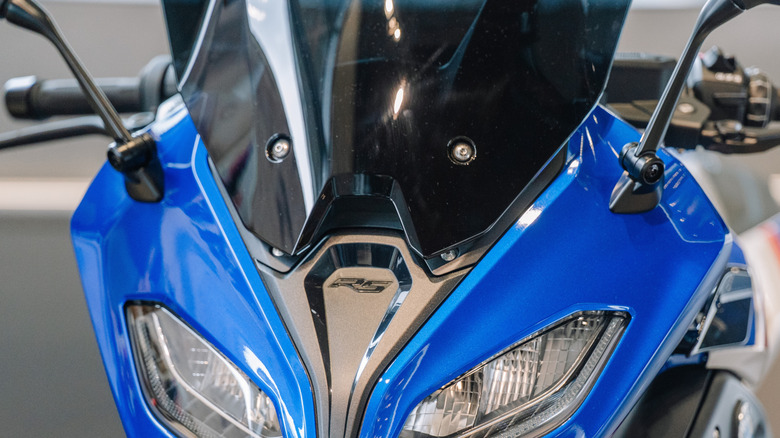How To Tint Your Motorcycle Windshield
Customizing the look and feel of your motorcycle comes in all shapes and sizes. From adding a popular new exhaust to swapping your fairings, all the way down to custom bolts and accessories. A relatively simple mod, that can also be a bit functional, is to tint your windscreen. Whether you're going for a bit of extra style, some added wind protection from a taller windscreen, or you're trying to reduce the glare from the sun on your motorcycle's instrument gauges, you might be looking for a darker windscreen on your bike. So, how does that process work? Which side of the windscreen do you apply the tint to? And can you do the work yourself?
A number of motorcycle manufacturers and aftermarket companies sell pre-tinted windscreens, so those are an option worth considering first. Buying a windshield replacement and installing it is generally a simple process. On most motorcycles, a few bolts are all that stand between you and removing the windscreen -– and re-installing a tinted one. That's likely the least labor-intensive way to tint your motorcycle windshield. And, if you want to return to the clear windshield at a later date, you've always got it around for a swap out (or if you sell the bike on and the new owners want all those OEM parts). If a tinted windscreen isn't available on your motorcycle, you can also do the work yourself and apply either a tint film, or a tint spray.
Installing a new windscreen
If you decide to go the route of replacing your windscreen with a pre-tinted model, installation should be relatively straightforward. Most motorcycles use either a set of screws or some form of nut-and-bolt combination for the windscreen, allowing it to be removed with just a few turns of a wrench or screwdriver. Remove the old windscreen by removing the bolts, then set them aside somewhere you won't lose them. Remove the windscreen carefully, making sure to not scratch or crack it — you may decide later that you want to re-install it. Align the new windscreen to the proper mounting locations, then re-install the screws or bolts. Be careful not to over-tighten the screws or bolts — your manual may have torque specs for this reason.
Some motorcycles with adjustable windscreens will require that the windscreen is in a particular location to remove the bolts or screws that hold it in place, so be sure to check your owner's manual. In some cases, especially on sport bikes, there are rubber grommets involved in the process. On a new windscreen, you may have to install these grommets yourself before attaching the windscreen to your bike's front fairing -– or use the old ones from your original windscreen.
How to apply tint
Tinting a motorcycle windshield is a similar process to tinting most other glass and plastic surfaces. First, you need to select the shade of tint you want -– something light or something dark. Removing the windscreen is your next step, and then you begin the tint process, which is step-for-step the same as the process we recommend for tinting your car's windows at home. Any leftover dirt or dust caught between the tint and the windscreen will cause imperfections and could cause the tint to lift and separate from the windscreen over time, so be sure to clean thoroughly.
Before installing your selected tint film, cut the desired tint into a template so it's easier to handle. Also, be sure to apply the tint to the inside of your windscreen so it doesn't take the impact from rocks, bugs, and debris hitting your windshield over time. Apply the tint film using soapy water, a squeegee of some sort, and a heat gun if necessary (a razor blade will also help you cut excess tint film). Applying any tint film will be a relatively delicate process, and you may want a second person to help you install the film. As previously mentioned, using a spray-on tint is also an option. Some tint sprays can be removed at a later date, so it isn't permanent as you might think. The finish is a bit duller than a typical tint film though, and multiple coats of the spray can be required.


